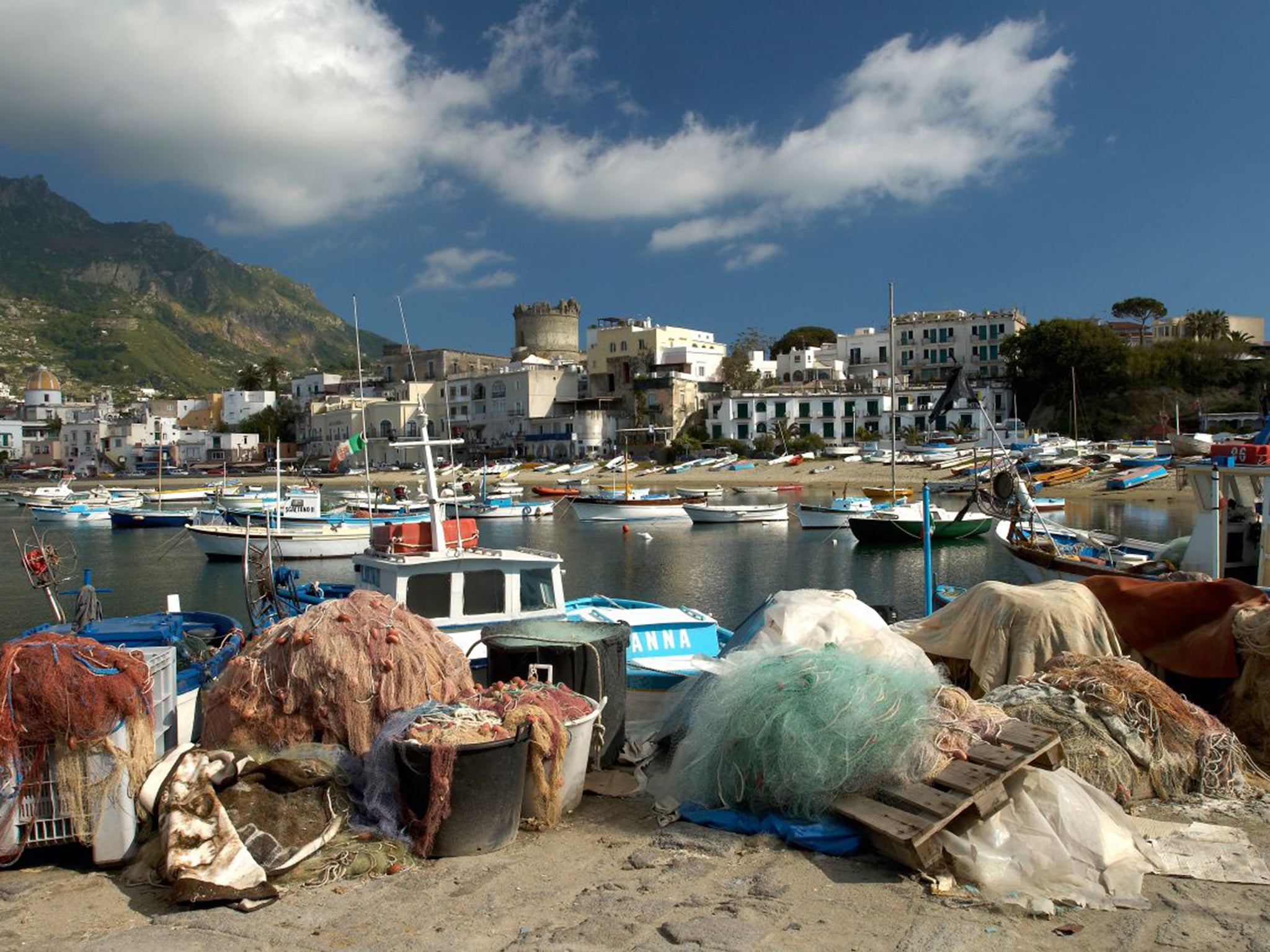Ischia: Trawlermen on Italian island learn to dive so they can rescue sunken Roman settlement of Antica Aenaria
'This is the site we’d been looking for, the real evidence of a major Roman settlement here in this period'

Your support helps us to tell the story
From reproductive rights to climate change to Big Tech, The Independent is on the ground when the story is developing. Whether it's investigating the financials of Elon Musk's pro-Trump PAC or producing our latest documentary, 'The A Word', which shines a light on the American women fighting for reproductive rights, we know how important it is to parse out the facts from the messaging.
At such a critical moment in US history, we need reporters on the ground. Your donation allows us to keep sending journalists to speak to both sides of the story.
The Independent is trusted by Americans across the entire political spectrum. And unlike many other quality news outlets, we choose not to lock Americans out of our reporting and analysis with paywalls. We believe quality journalism should be available to everyone, paid for by those who can afford it.
Your support makes all the difference.On a bright autumn morning in the Bay of Cartaromana, fishermen slop brown and pink octopus into buckets and line up large silver fish on crates of ice as the first local shoppers appear on the quayside. Seafood doesn’t get any fresher than this.
But only yards away in a corner of this tiny port on Ischia in the Bay of Naples, other fishermen are engaged in a rather different activity. The first clue to the unusual business is the row of rubber wetsuits, in orange and black, hanging in the passageway of an old stone building.
Inside the house, fishermen slide past oxygen cylinders to talk to archaeologists with underwater charts of the adjacent bay. The unlikely team is discussing the next move in their plan to excavate one of Italy’s most recently discovered and important ancient sites, Antica Aenaria, which dates from 200BC.

Fishermen are assisting experts from the Soprintendenza per i Beni Archeologici di Napoli, a local division of the culture ministry, which is responsible for preserving antiquities. They are working on the underwater excavation of a site that Alessandra Benini, the chief archaeologist at Antica Aenaria, describes as an “extremely important” find.
“This is the site we’d been looking for, the real evidence of a major Roman settlement here in this period,” she said.
Rising sea levels in this volcanic and earthquake-prone part of Europe mean that what is left of the site is two metres under water. But many of the valuable relics are further out into the little bay at depths of six metres or more, between the port and the Aragonese castle on its own small island.
Giulio Lauro, 57, one of the fishermen turned archaeologists, said helping the underwater excavation seemed a natural thing for him and six of his colleagues, including his son. “For me, someone who loves the sea and Ischia, it seemed obvious to help,” he said. “It’s a way of giving something back to the island I love.”
But there’s a business motive. The fishermen are not being paid for the sub-aqua work in which he and colleagues have been taught how to remove stones and debris gently with special vacuum tubes in the search for valuable relics. He hopes, however, that by developing the archaeological site, he will be able to cash in on the prospective tourism business that aims to take visitors over and around Antica Aenaria in glass-bottomed boats.
“But when we decided we wanted to help on the site, it meant six months training as a diver,” he said. “The job is difficult and, unless you know exactly what you’re doing, dangerous.”
He said the activity has also given him a new-found appreciation of archaeology. He still fishes, but he does this from November to March. From April to October, he and colleagues assist in the dig and show tourists around the site.

Dr Benini hails the underwater efforts of her fishermen colleagues. “They’ve done great work. Their contribution will help to make this a very important archaeological site and attract tourists to this part of the island,” she said.
The significance of the site became apparent only in 2007, and excavation began just four years ago. But already, a number of items and some insights have been accrued from the site. Everyday objects and pieces of masonry have revealed how the Roman inhabitants of this place lived more than 2,000 years ago, and who they were.
More important has been the evidence of a foundry. The underwater team also believes that the site met an abrupt end, of the type that struck Pompeii on the mainland. They have discovered evidence that huge and sudden damage occurred in around AD200 – the time at which historians have spoken about a disastrous event, probably an earthquake or tsunami.
“Ischia was very important for the Romans for commercial reasons, given its position in the centre of the Mediterranean,” Dr Benini said. A strong presence there allowed the empire to control the rest of the Mediterranean.
Authorities on Ischia, which is seen as more down to earth than the glitzy island of Capri which sits on the other side of the Bay of Naples, hope to develop its appeal as a centre of archaeology.
Sources at the Soprintendenza say that evidence of at least another two important coastal sites on Ischia have been discovered and will be investigated. And that could even mean more work for entrepreneurial fishermen with an interest in archaeology.
Join our commenting forum
Join thought-provoking conversations, follow other Independent readers and see their replies
Comments